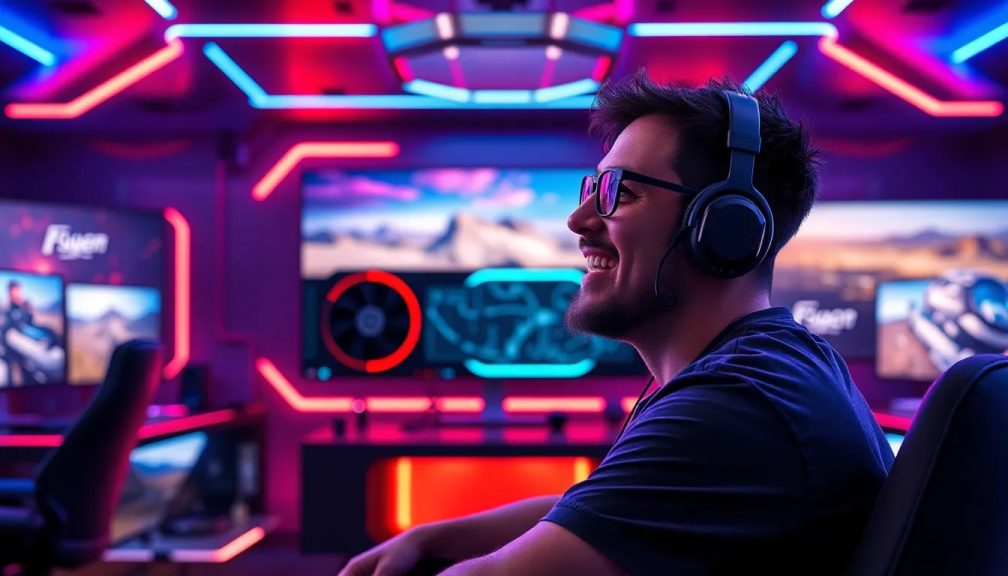FSR 4 compatible with Radeon RX 6000 and RX 7000 series

As the world of gaming technology continues to evolve, the introduction of the latest advancements in graphics rendering has become a hot topic among enthusiasts. One of the most significant developments is the FidelityFX Super Resolution (FSR) 4 technology by AMD, which has recently become compatible with the Radeon RX 6000 and RX 7000 series graphics cards. This compatibility not only enhances gaming experience but also opens up new avenues for performance optimization. Let's dive deeper into what this means for gamers and developers alike.
- The breakthrough of FSR 4 compatibility
- Why FSR 4 was initially incompatible with Radeon RX 6000 and RX 7000
- How to enable FSR 4 on AMD graphics cards
- The impact on image quality and gaming performance
- Future implications of FSR 4 technology
- Community reactions and developer insights
- Conclusion on FSR 4's evolution
The breakthrough of FSR 4 compatibility
The recent leak of the open-source development kit code for FidelityFX revealed files related to an INT8 model of the FSR 4 upscaling technology. This model is particularly important because it is natively supported by the Radeon RX 6000 and RX 7000 graphics cards. The fact that developers have been able to compile a DLL version of FSR 4 that operates with INT8—just 40.7 MB in size—marks a substantial advancement in graphics performance.
This new version allows FSR 4 to run effectively on Radeon RX 6000 and RX 7000 cards, and even on GeForce RTX 30 series GPUs. Such cross-compatibility is a game-changer in the industry, as it enables a broader range of users to benefit from the enhanced graphics performance that FSR 4 offers.
Why FSR 4 was initially incompatible with Radeon RX 6000 and RX 7000
Initially, AMD stated that the incompatibility stemmed from the underlying AI model used in FSR 4, which requires FP8 operations. Unfortunately, both the RX 6000 and RX 7000 series graphics cards are limited to FP16 operations. This limitation necessitated an emulation of FP8 using FP16, leading to performance declines.
The shift to the INT8 model eliminates the need for this emulation, allowing for full compatibility without a significant performance drop. Early performance tests have shown promising results, maintaining good image quality while optimizing rendering speeds.
How to enable FSR 4 on AMD graphics cards
To use FSR 4 on the Radeon RX 6000 and RX 7000 series, users need to follow a few straightforward steps:
- Download the INT8 DLL from the provided link.
- Replace the existing FSR 3.1 DLL in your games with the new one using a tool like Optiscaler.
- Ensure your games support DirectX 12 to utilize this functionality.
This method is not entirely new; there have been previous attempts to run FSR 4 on the RX 7000 series, but those relied on forced compatibility through FP8 emulation, resulting in performance hits of up to 33%.
The impact on image quality and gaming performance
The introduction of FSR 4 is significant not just in terms of compatibility but also in how it influences performance metrics. Preliminary tests indicate that while the render time increases—rising from 0.4 ms to 1.2 ms—the actual frame rate impact is minimal, showing only a 7% decrease compared to FSR 3.1.
It's essential to note that these results primarily come from testing with the Radeon RX 7900 XTX, AMD's flagship graphics card. Performance outcomes may differ with less powerful models.
In terms of graphical fidelity, FSR 4 shows impressive improvements. For instance, in a game like Cyberpunk 2077, notable graphical glitches that existed in FSR 3.1, such as shimmering effects around grass textures, are significantly reduced. Players can expect a cleaner and sharper image overall, enhancing their gaming experience.
Moreover, gamers concerned about performance can opt for the balanced mode in FSR 4, which compensates for any potential loss in frame rates while still delivering superior image quality compared to FSR 3.1’s quality mode. However, it is crucial to note that Optiscaler is currently limited to single-player titles.
Future implications of FSR 4 technology
The advancement of FSR 4 compatibility with various graphics cards points to a promising future for both developers and gamers. With the technology now usable across a wider array of hardware, we can expect:
- Increased adoption of FSR technology in new games.
- Enhanced graphics performance without necessitating the latest hardware.
- Greater focus on optimizing games for a broader audience.
The move to make FSR 4 accessible on older GPUs could revolutionize how games are developed and optimized, potentially leading to a more inclusive gaming environment.
Community reactions and developer insights
The gaming community has responded positively to the news of FSR 4’s compatibility improvements. Many players have expressed excitement over the potential for enhanced gameplay experiences. Developers are also keen to integrate this technology into their titles, recognizing its ability to improve graphics while maintaining performance.
For a visual understanding of FSR 4 in action, check out this informative video:
Conclusion on FSR 4's evolution
The journey of FSR 4 from an initially limited compatibility range to broad application across multiple graphics cards reflects AMD's commitment to enhancing the gaming experience. With ongoing developments and community feedback, FSR 4 is poised to become a standard in the industry, redefining performance expectations for gamers around the globe.




Leave a Reply